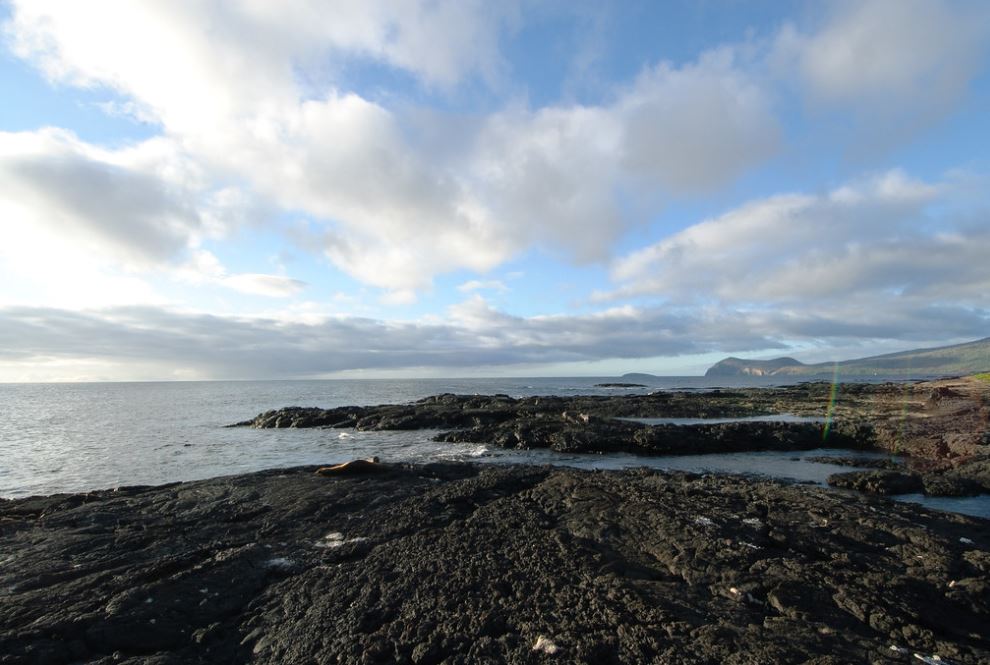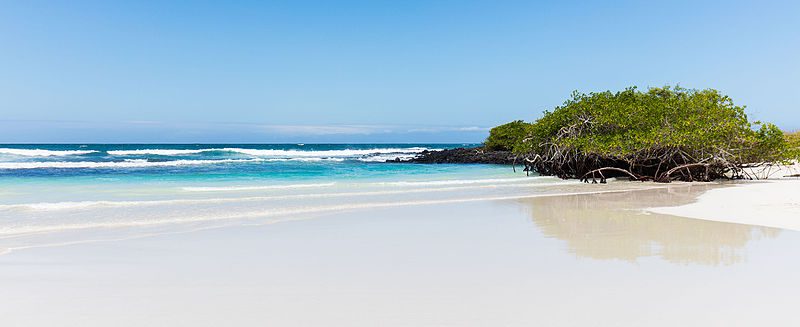It’s a common occurrence for the Galapagos Islands to be seen as a relatively small, conveniently clustered set of islands. Often times, guests think that getting around them is as easy as driving around the Florida Keys or exploring the entire circumference of Iceland. But by zooming out and making a couple of measurements, we’re here to tell you otherwise.
TALK TO A DESTINATION EXPERT

Diego Zapata

Rosa Mena

Sandy Lara

Diego Zapata

Rosa Mena

Sandy Lara
Pop Quiz: Where are the Galapagos?
It’s important to remember that 97% of the Galapagos has designated National Park area, with the remaining 3% reserved for inhabitants (the total of which estimated to be around 30-36,000 people). There are 14 major islands and numerous other minor islands and islets that are prohibited to visit and/or reserved for scientific research only. The majority of these islands are the result of volcanic eruptions, many of which are still occurring to this day.
So just how big are the Galapagos Islands?

The Galapagos Islands cover a total of area 45,000 square kilometers (17,000 square miles) of the ocean – 7,880 square kilometers (3,040 square miles) of which is made of land. Seen another way, only around 18% of Galapagos is made of land which, in terms of space, is comparable to the state of Mississippi or the country of Greece.
Here’s a list of some of the biggest Galapagos Islands, ranked largest to smallest:
- Isabela: 3,670 sq km / 1,416 sq mi (almost half of the entire landmass of Galapagos!). Inhabited.
- Santa Cruz: 986 sq km / 380 sq mi. Inhabited.
- Fernandina: 642 sq km / 247 sq mi
- Santiago: 572 sq km / 220 sq mi
- San Cristobal: 557 sq km / 215 sq mi. Inhabited.
- Floreana: 173 sq km / Inhabited.
- Espanola: 60 sq km / 23 sq mi
- Baltra: 21 sq km / 8 sq mi
- Genovesa: 14 sq km / 5.4 sq mi
But, there’s a catch when it comes to land size in Galapagos: some of the islands are still growing, producing new terrain all the time as a result of their volcanic activity. They’re also drifting around 1 inch (2.5 centimeters towards the South American continent).

Javier Garcia

Eduardo Silva

Carolina Escobar
START PLANNING YOUR TRIP

Javier Garcia

Eduardo Silva

Carolina Escobar
Get in touch for more
CONTACT US
What’s the distance between islands? How long does it take to navigate around the Galapagos Islands?
On average, when moving from island to island, the Santa Cruz II covers 13.7 nautical miles (25.3 nautical kilometers) at midday and 53 nautical miles (98 nautical kilometers) at night, all at an average speed of 10 knots (18km/h – 11.5mph).
Why?
It has a lot to do with the size and arrangement of the islands throughout the archipelago. There are several reasons for why our minimum recommended number of days in Galapagos is the golden 5 and the enormous size of the archipelago is one of them. It’s also why we split up the archipelago up into 3 equally different regions that each offer their own unique set of islands and wildlife. Don’t worry: each itinerary aboard the Santa Cruz II Galapagos Cruise guarantees that you will see the best of what Galapagos has to offer.
Something else is that each itinerary does the longest of its navigations at night, which in turn allows you to take advantage of as much daylight as possible and enjoy the visitor sites.


